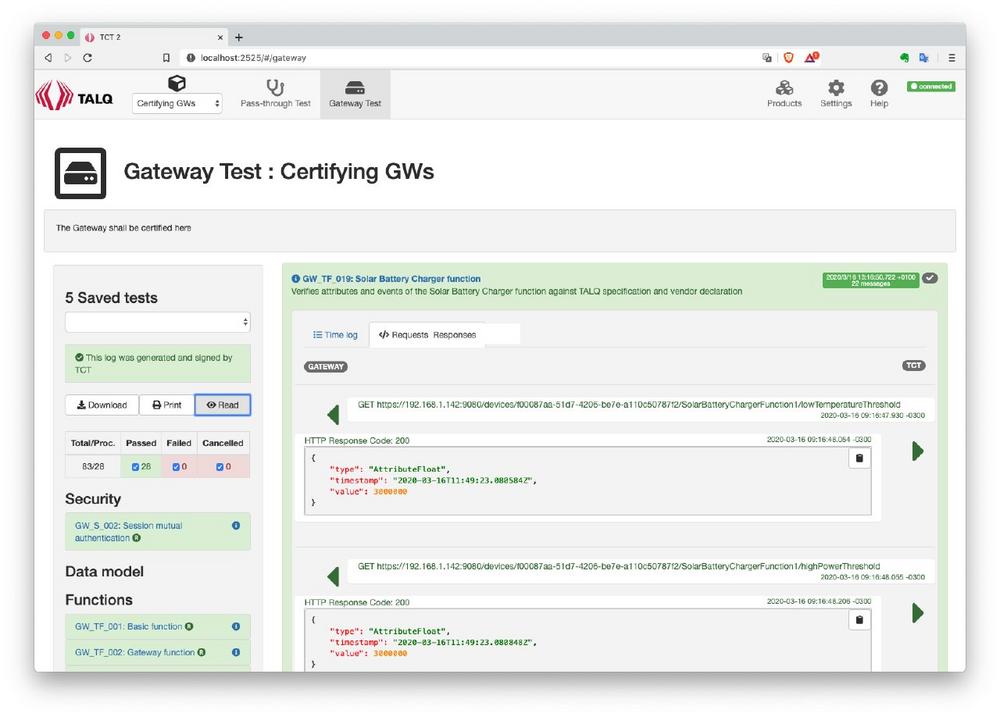The range of smart city applications in which local authorities are investing is wide. The solutions include outdoor lighting as well as waste, parking and traffic management, E-Mobility, environmental sensors and various other public services. Currently, eighteen products of ten different manufacturers have been certified as TALQ-compliant. All of them target easing investment decisions of cities by enabling interoperability, which in turn fosters competition and allows purchasers of fixed installations to invest in open systems to guarantee future-proof solutions.
To keep the software protocol up-to-date, the Technical Work Group and the Requirements Work Group within the consortium continuously review and expand the functions supported by the protocol. Member companies can suggest and request additional features to be included in the protocol to reflect the functionality offered by their own systems. Version 2.2.0, approved by TALQ Steering Committee, embraces a bundle of new features.
Novel, integrated smart city features
Of the numerous new features that have been added to the Specification, the functions related to smart cities applications are of particular interest. Some of them, for example, provide statistics on the number of vehicles passing on a road, detect changes in asset location or identify and record asset orientation changes. Some others are more related to metering, e.g. filling levels of containers or fluid levels in gullies, lakes, tanks, or wherever. Yet further functions are related to energy and battery levels: monitoring charging and discharging; or managing solar panels such as those used for public transit information, traffic control, public security (CCTV) and many others. All of these additional features are backward compatible with the previous 2.1.0 release.
“The integration of smart city applications in a former pure lighting standard has become reality and shows the significance of the TALQ protocol as a future-proof global standard. But other interesting capabilities have also been added to the Certification Tool, for example, supporting multiple profiles in one certified product and a new command line version of the tool, which eases the its integration in a CI/CD software development system” explains José Sanchis, Chairman of the Certification Work Group.
Version 2.2.0 is now the new official TALQ version.
Founded in 2012, the TALQ Consortium is establishing a globally accepted standard for management software interfaces to control and monitor heterogeneous smart city applications. The TALQ Smart City Protocol is a specification for information exchange, suitable for implementation in various products and systems. This way interoperability between Central Management Software (CMS) and Outdoor Device Networks (ODN) from different vendors will be enabled, such that a single CMS can control different ODNs in different parts of a city or region.
TALQ is an open industry consortium currently consisting of more than 40 member companies.
For more information visit www.talq-consortium.org.
Certified TALQ-Compliant Products (Version 2):
Central Management Software (CMS):
– CityLinx from BeeZeeLinx, France
– City Vision from Capelon, Sweden
– SLV CMS from Itron, USA
– SmartLinx from LED Roadway Lighting, Canada
– LuxSave Streetlight CMS from LuxSave, Sweden
– CityMESH CMS from SICOM, Chile
– Smart Firefly from Uvax, Spain
Outdoor Device Network (ODN) / Gateway:
– Citybox from Bouygues, France
– Flashnet IoT platform from Flashnet, Romania
– SLV Gateway from Itron, USA
– Ki from Lucy Zodion, United Kingdom
– Owlet IoT from Schréder, Belgium
– CITY GATEWAY from SICOM, Chile
– Access Point System from Smartnodes, Belgium
– Sustainder Brokerage Layer from Sustainder, The Netherlands
– Trilliant TALQ Gateway from Trilliant, Canada
– CA-13 from Uvax, Spain
– Witti TALQ Gateway from Witti, France
TALQ Consortium
445 Hoes Lane
USANJ 08854 Piscataway, NJ
Telefon: +1 (732) 4655817
Telefax: +1 (732) 981-9473
http://www.talq-consortium.org/
TALQ Communications Consultant
E-Mail: talk2@talq-consortium.org
![]()
